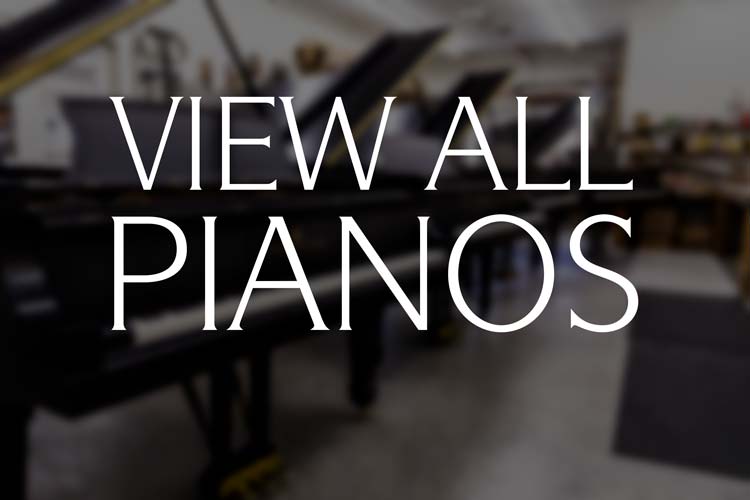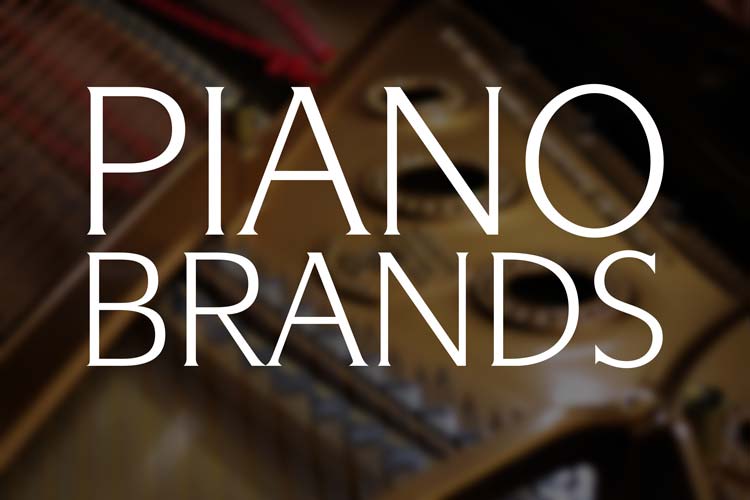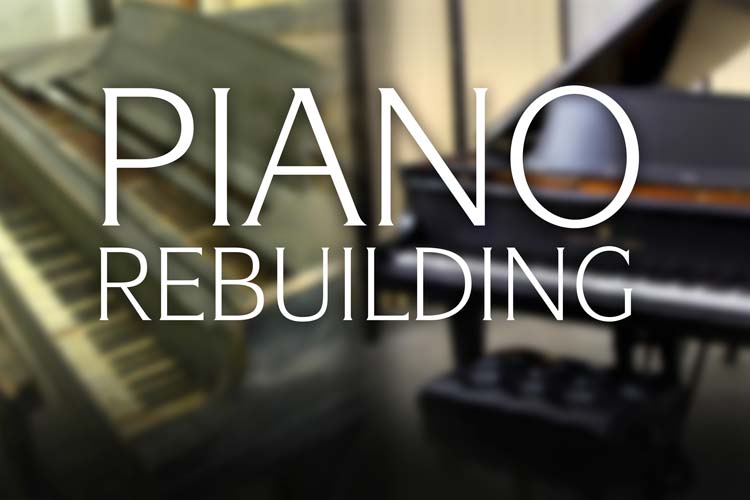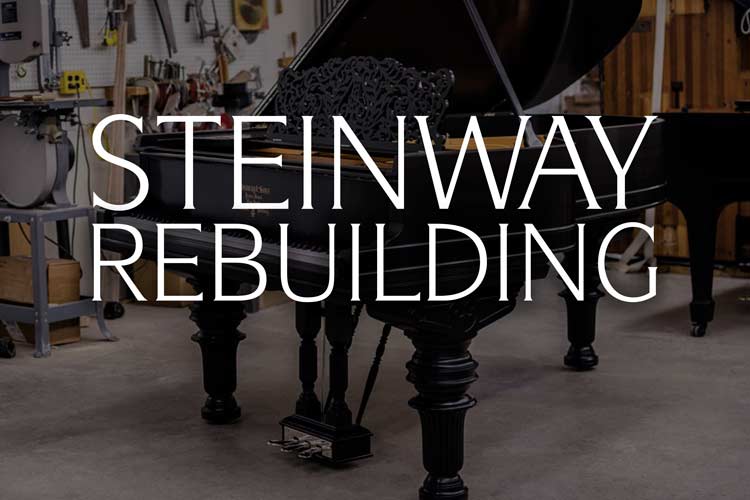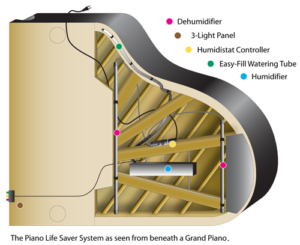Soundboard | The Piano’s Amplifier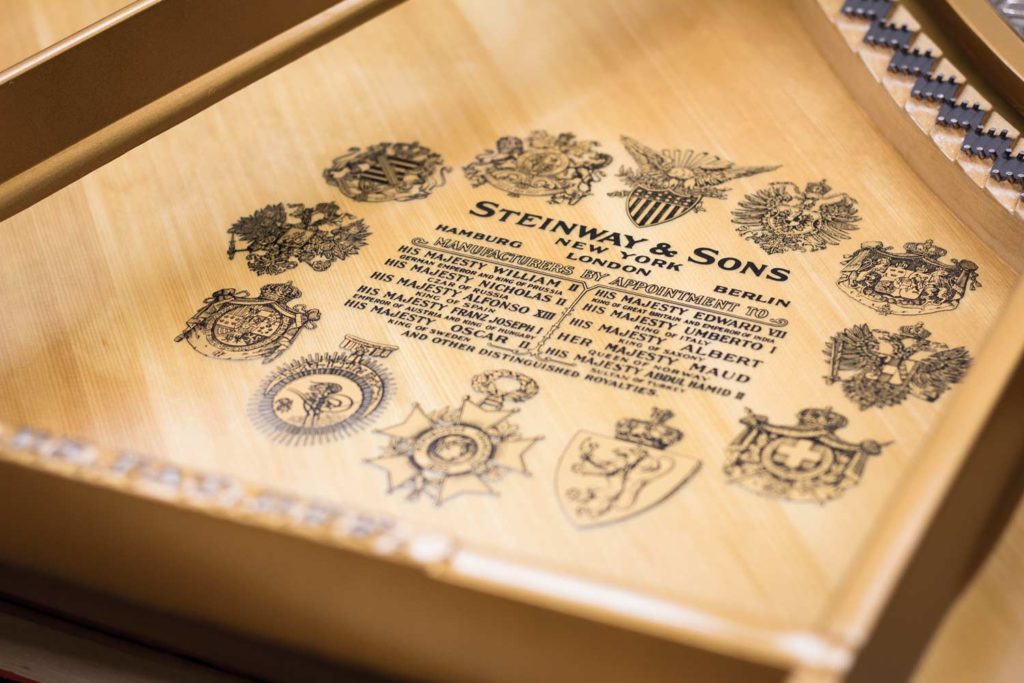
Considered to be the heart of the piano, the soundboard is the horizontal surface that sits under the strings. The energy from the vibrating strings is transferred through the bridge to the soundboard where it is greatly amplified. In pianos, soundboards are traditionally made of solid spruce due to its long, straight cells and high resonance. A softer wood, high-quality spruce carries sound better and provides a good sustain – that is, allowing vibrations to go through the soundboard for a very long time.
Close-grained wood is selected which allows the energy to travel to the ends of the soundboard and into the rim. When the wood is close-grained, the soundboard energy travels much more efficiently and helps produce a much higher quality of tone. The soundboard is ‘crowned’ near its center and is supported by numerous ribs underneath. Proper crafting of a piano’s soundboard is one of the essential parts of the manufacturing or rebuilding process.
A Steinway Soundboard
Good technology and craftsmanship have always been a part of building a Steinway piano. Soundboards manufactured during the ‘golden era’ of Steinway & Sons were constructed of the finest quality, old-growth spruce. These old growth trees resulted in lumber with a very tight, even grain. After the wood was selected and cut, it was then cured for up to seven years using special racks that allowed the outdoor air to circulate around the boards. As the wood dried completely, it became extremely stable. Today, Steinway utilizes the kiln drying method. Each soundboard must be custom crafted for the specific piano it is being installed into. Expert ‘Bellymen’ spend a full day on the installation of every board. The use of the finest materials coupled with heightened craftsmanship resulted in the legendary soundboard quality for which Steinway & Sons is known.
Humidity and the Soundboard
Because the piano’s soundboard is made of thin sheets of wood, it is one of the most vulnerable parts of the piano. It can crack if not kept at consistent humidity levels. The more constant you can keep the humidity, the more stable you can keep your piano. Swings in humidity can affect the stability of the tuning and the structural integrity of the instrument.
All wood is sensitive to humidity changes. If the individual planks in the soundboard shrink from dryness, cracks will form. Swings in the humidity and the resulting swelling and shirking of the wooden parts can cause damage to your piano. Homes in the Midwest can get down to a 15 percent relative humidity in the winter – and if you leave the windows open and it’s raining in summer, the humidity can easily rise to 70 percent. The bad news is that just a 10 percent change is enough to make a piano go out of tune from expanding/shrinking of the wood due to humidity levels.
Note: One way to control humidity is with a Piano Saver System, available through Chupp’s Piano Service. This system from Dampp Chaser features both humidifier and dehumidifier systems. An advanced humidistat underneath the piano constantly monitors the moisture content of the air. The system features heating bars underneath the piano that automatically dry the air when excessive humidity is detected. When the air is too dry, the system automatically switches to push more moisture into the air. We have utilized these systems for years and have found they greatly increase the stability of any piano. For more information, contact Chupp’s Pianos today.

